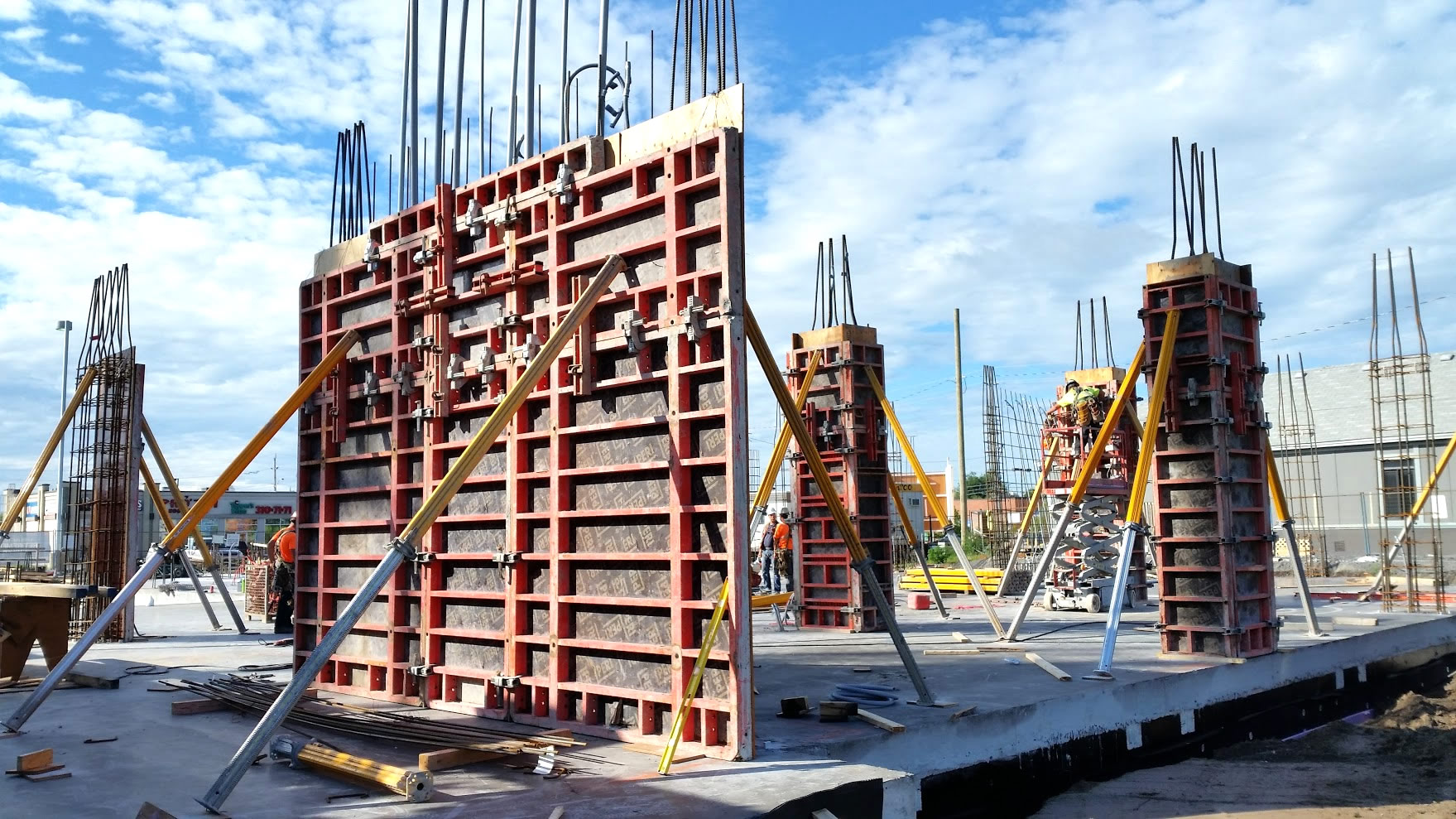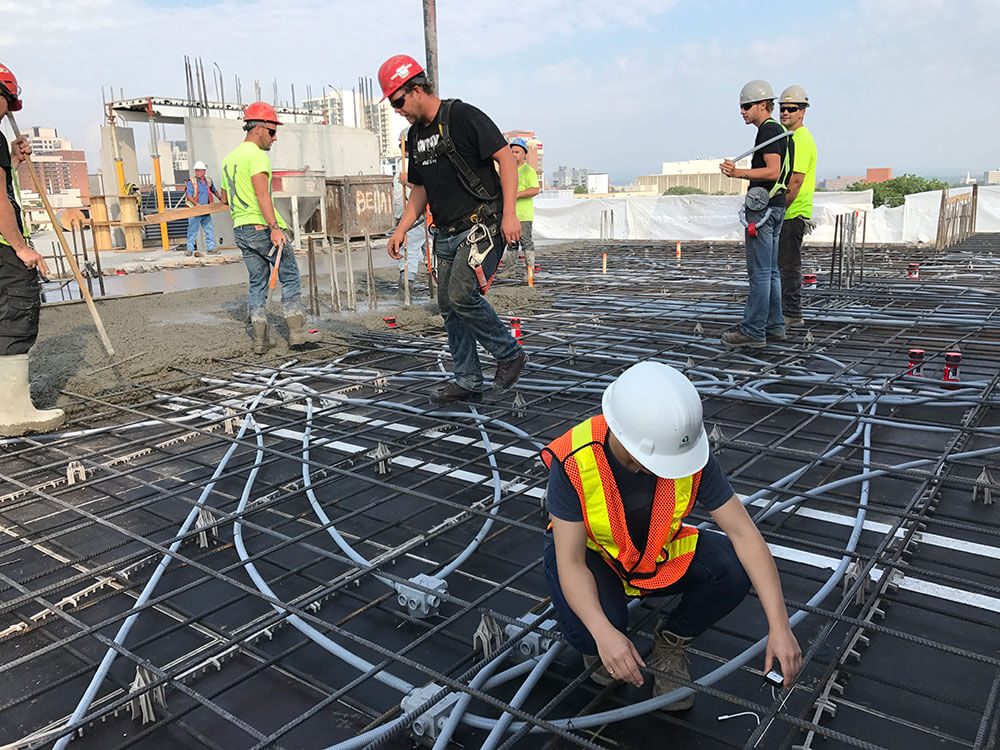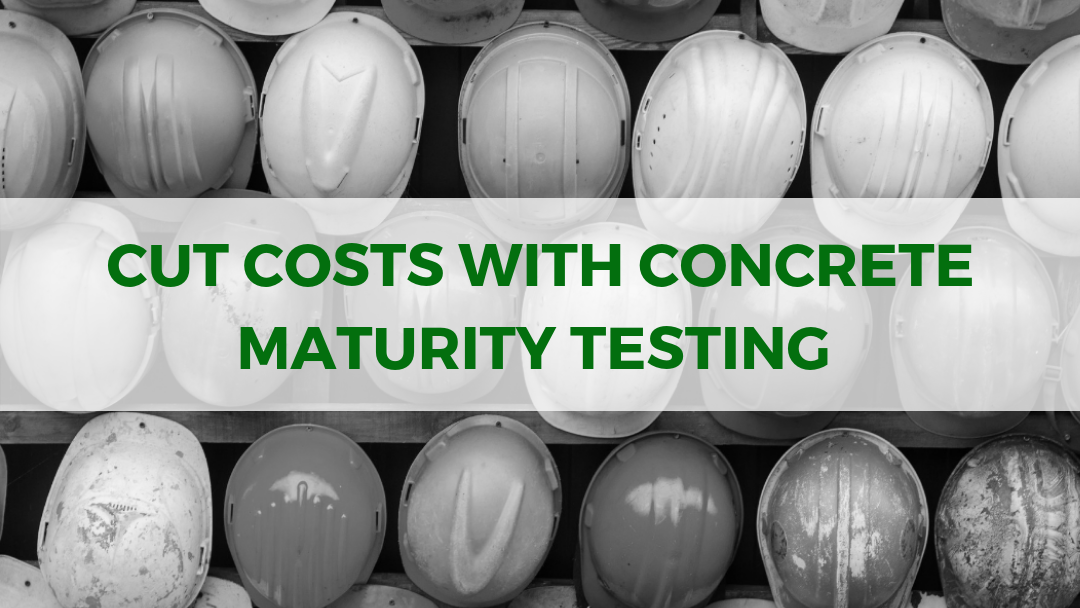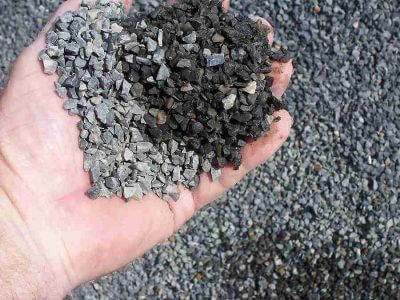Concrete mixers are essential machines in the construction industry, designed to combine cement, aggregates (like sand or gravel), and water to form concrete. This mixture is crucial for building structures, pavements, and other infrastructure. Understanding the different types of concrete mixers and their specific applications can help in selecting the right equipment for a project. In this blog, let’s explore the various types of concrete mixers, their uses, and key factors to consider for your construction project’s needs.
SmartRock® Long Range Savings for Big Projects

Types of Concrete Mixers
Batch Mixers
A concrete batch mixer is a machine that helps mix different materials like cement, sand, gravel, and water to make concrete. These mixers ensure that the ingredients are blended evenly to create strong and durable concrete for construction projects like buildings, roads, and bridges.
There are two main types of concrete batch mixers: stationary batch mixers and mobile batch mixers. Stationary mixers are used in concrete plants where large amounts of concrete are made and then transported to construction sites. Mobile mixers, also called transit mixers, are mounted on trucks and mix the concrete while traveling to the site, so it stays fresh and ready to use.
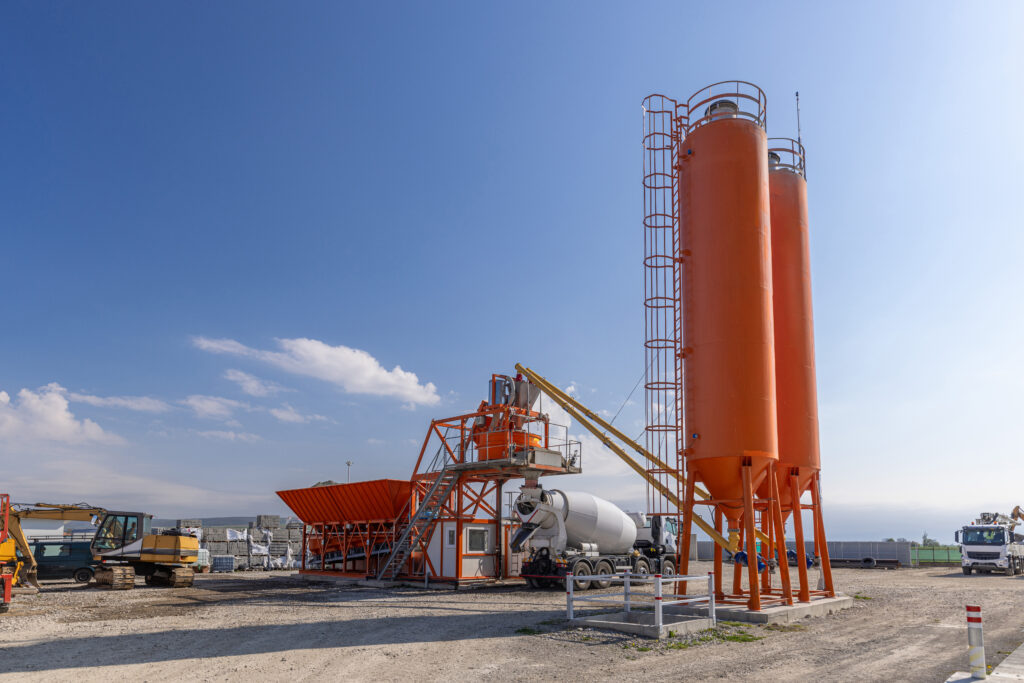
Concrete batch mixers can be manual, semi-automatic, or fully automatic. In manual mixers, workers add the materials and control the mixing process. In automatic mixers, computers measure and mix everything precisely, making the process faster and reducing waste.
These mixers are essential in construction because they help create consistent, high-quality concrete, saving time and effort compared to mixing by hand. With advanced technology, modern batch mixers can even adjust the mix based on weather conditions or specific project needs, ensuring the best results.
Continuous Mixers
A continuous concrete mixer is a special type of mixer that keeps mixing concrete non-stop as long as the materials are supplied. Unlike batch mixers, which mix a set amount of concrete at a time, continuous mixers work continuously, making them ideal for large construction projects that need a steady flow of concrete.
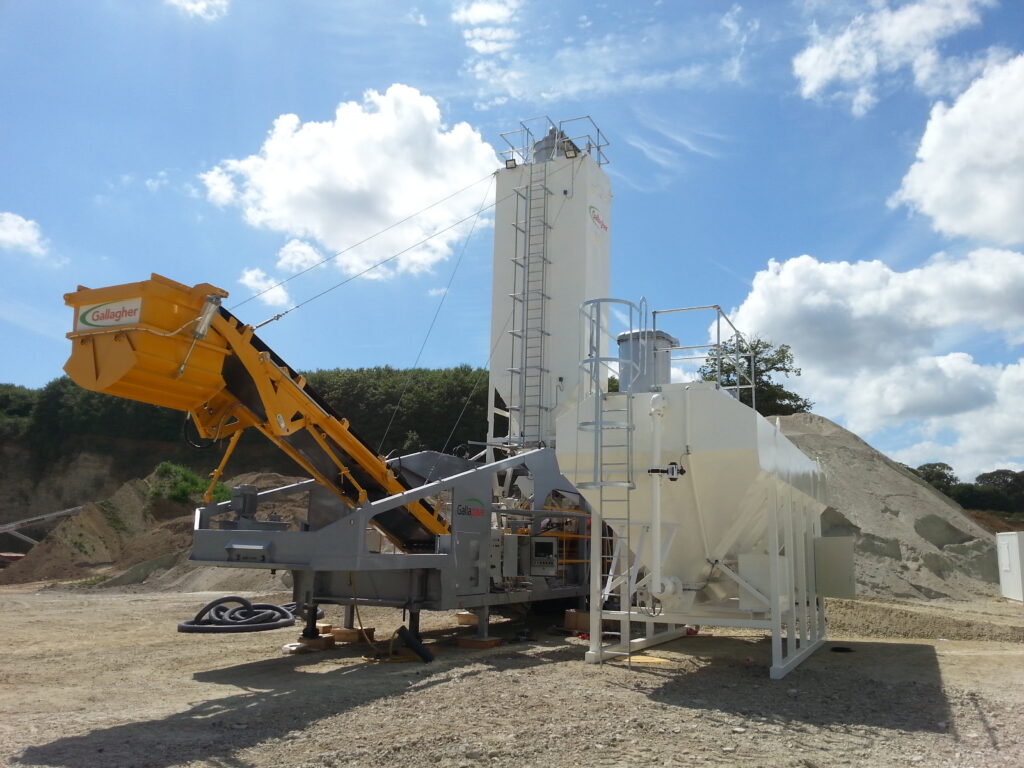
In a continuous mixer, materials like cement, sand, gravel, and water are fed into the machine at one end. Inside, a rotating drum or a spiral blade keeps mixing the ingredients as they move through the mixer. The finished concrete then comes out the other end, ready to be poured. This system ensures a constant and consistent supply of fresh concrete without stopping the process.
Continuous concrete mixers are especially useful for road construction, large bridges, and infrastructure projects where concrete is needed for long periods without interruptions. They are also commonly used in precast concrete manufacturing and large-scale industrial projects. These mixers help save time and reduce labor costs by eliminating the need to stop and reload materials for every batch.
With advancements in technology, modern continuous mixers come with automated controls that adjust the mix in real-time to maintain the correct consistency and quality. This ensures stronger and more durable concrete for construction projects.
Subtypes of Batch Mixers
When mixing concrete, two common types of mixers are Drum Mixers and Pan Mixers. Both serve the same purpose—combining cement, sand, gravel, and water—but they work in different ways and are best for different types of projects.
Drum Mixers
A drum mixer is a rotating drum where materials are added, mixed inside as the drum spins, and then poured out once ready. The drum continuously turns to ensure the materials are evenly mixed. Drum mixers are widely used in large construction projects because they can produce a steady and consistent supply of concrete.
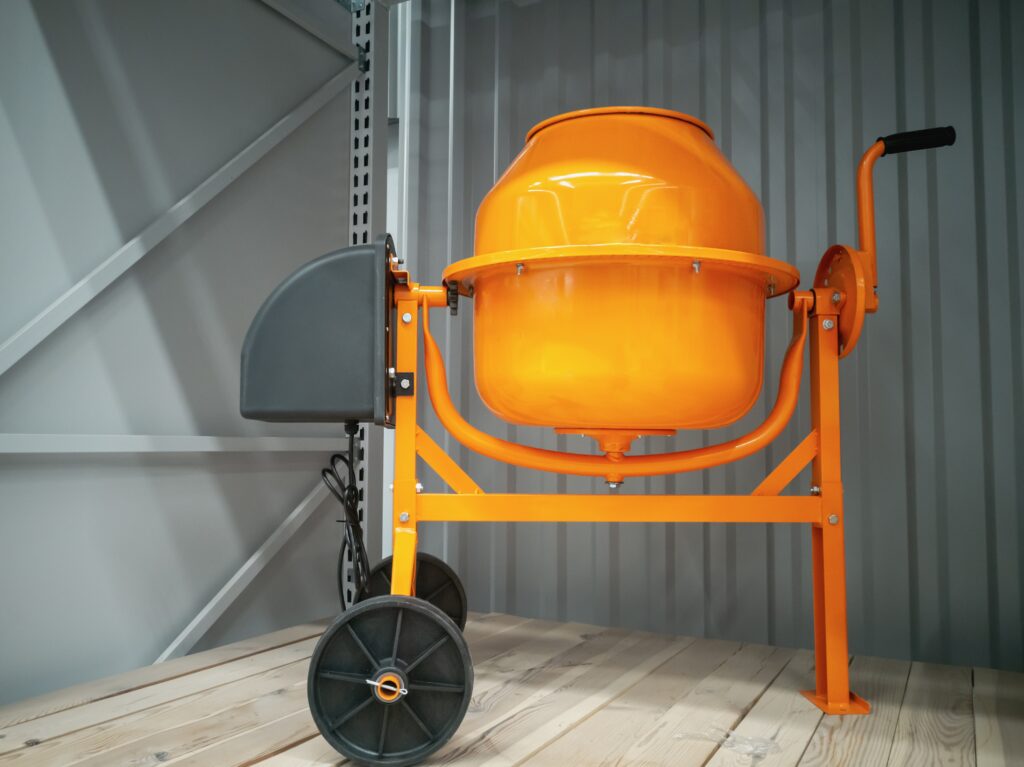
Advantages
- Efficient for large projects that need a continuous supply of concrete.
- Simple design with fewer moving parts, making maintenance easier.
- Cost-effective for high-volume mixing.
Disadvantages
- Less control over mixing precision.
- Can take longer to mix different types of concrete.
Pan Mixers
A pan mixer has a circular pan where the materials are added. Inside the pan, rotating blades or paddles mix the ingredients together. Unlike drum mixers, the pan itself does not rotate—only the blades move. Pan mixers are often used for smaller projects or specialized concrete, like precast concrete and laboratory testing.
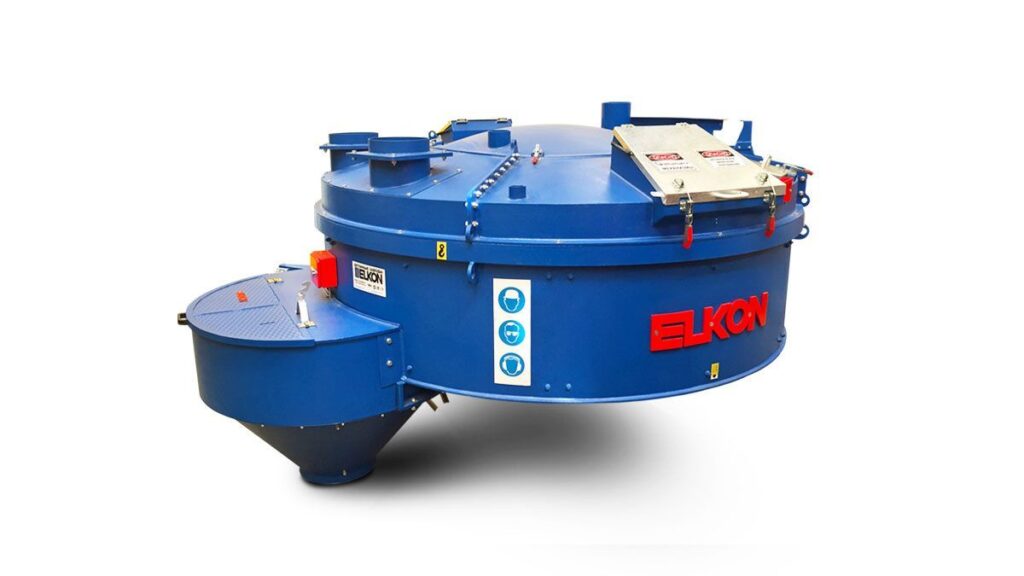
Advantages
- Better control over mixing quality, making it ideal for precise concrete mixes.
- Faster mixing times compared to drum mixers.
- Suitable for small batches and specialized concrete work.
Disadvantages
- Not ideal for large-scale projects that require continuous mixing.
- More moving parts mean higher maintenance compared to drum mixers.
Twin-shaft Mixers
Another powerful mixer is a twin-shaft concrete mixer. It has two horizontal shafts with rotating blades that mix the concrete. Unlike drum or pan mixers, twin-shaft mixers use two synchronized shafts that rotate in opposite directions, ensuring a fast and uniform mix. This type of mixer is commonly used for large-scale construction projects, high-performance concrete, and mass concrete production because it can handle large volumes of concrete efficiently.
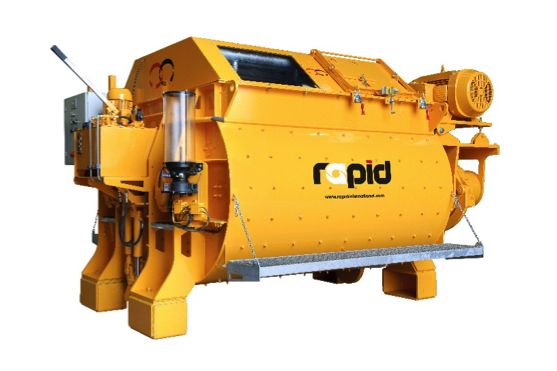
The dual-shaft system allows for intense mixing action, making the concrete mix more homogenous and well-blended. This results in stronger and more durable concrete, which is crucial for infrastructure projects like bridges, tunnels, highways, and precast elements.
Advantages
- High Mixing Efficiency – The two shafts create a strong turbulence, ensuring a quick and even mix.
- Handles Large Batches – This can produce large volumes of concrete in less time, making it ideal for big projects.
- Strong and Consistent Concrete Quality – Ensures uniform mixing, reducing the chances of weak spots in the concrete.
- Great for Heavy-Duty Applications – Used for mass concrete production, including dams, highways, and precast concrete.
Disadvantages
- Higher Initial Cost – These mixers are more expensive than drum or pan mixers.
- Requires More Maintenance – The multiple moving parts and powerful shafts require regular maintenance to prevent wear and tear.
- Not Suitable for Small Jobs – Best for large projects, but may not be necessary for small-scale concrete work.
Concrete Mixer Trucks
A concrete mixer truck is a special vehicle designed to transport and mix concrete while on the move. These trucks ensure that concrete stays fresh and does not harden before reaching the construction site. They are commonly seen on roads delivering concrete for buildings, roads, bridges, and other infrastructure projects.
It has a large rotating drum mounted on the back. The drum slowly turns while the truck is moving, keeping the concrete mixed and preventing it from setting. Inside the drum, spiral blades help mix the materials evenly. When the truck reaches the site, the drum spins in the opposite direction to pour the concrete out through a chute.
Some mixer trucks carry ready-mix concrete from a plant, while others mix the concrete on-site using dry materials and water. This flexibility allows construction workers to use fresh, high-quality concrete whenever needed.
Types of Concrete Mixer Trucks
Standard Transit Mixer
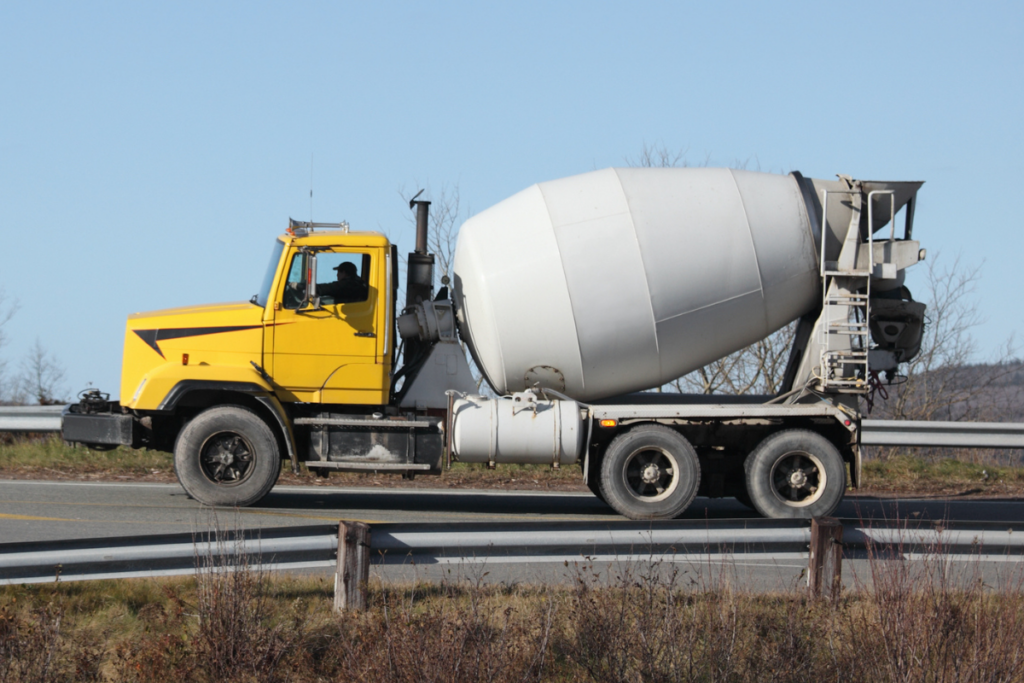
- These trucks carry ready-mixed concrete from a batching plant and keep it moving until delivery.
- Ideal for large construction projects where concrete is needed quickly.
Volumetric Concrete Mixer

- These trucks carry dry materials separately and mix them on-site as needed.
- Great for small projects or jobs that require different concrete mixes.
Front Discharge Mixer Truck
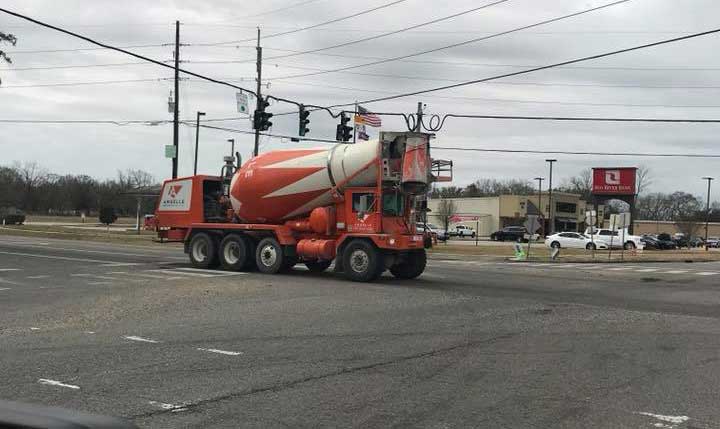
- Unlike traditional mixers, these trucks pour concrete from the front instead of the back.
- The driver has better control over the pouring process, making it easier to place concrete exactly where needed.
- Often used in tight construction sites where maneuverability is important.
Global Variations in Concrete Mixers
The design and usage of concrete mixers can vary across different countries due to local construction practices, regulations, and project requirements. For instance, in Europe, twin-shaft mixers are more prevalent due to their high-intensity mixing capabilities, while in North America, tilt drum mixers are commonly used.
SmartRock® Long Range Savings for Big Projects
Considerations for Selecting the Type of Concrete Mixer
Choosing the right concrete mixer involves analyzing several factors to ensure the equipment meets the needs of the project effectively. Here are the key considerations:
- Project Size and Scale
- Small Projects: For residential or small-scale construction, smaller mixers like portable drum mixers are often sufficient.
- Large Projects: Continuous mixers or large-capacity batch mixers are ideal for large infrastructure projects like bridges or highways.
- Type of Concrete Required
- If the project demands high-quality concrete with consistent properties, a pan mixer or twin-shaft mixer can be more effective.
- For standard concrete mixes, drum mixers or transit mixers are typically adequate.
- Location and Accessibility
- If the site is remote or has limited space, portable mixers or volumetric mixers that can mix on-site are more practical.
- Urban areas with easy access to batching plants may rely more on transit mixers for ready-mixed concrete.
- Mixing Speed
- Projects requiring rapid concrete placement should use high-speed mixers like twin-shaft or planetary mixers.
- For less time-sensitive applications, standard drum mixers are sufficient.
- Budget
- For cost-conscious projects, standard drum mixers or portable mixers are economical choices.
- Specialized mixers, such as twin-shaft mixers or volumetric trucks, may involve higher upfront costs but could save on operational efficiency in the long run.
- Volume and Frequency of Use
- High-volume, repetitive mixing operations benefit from continuous mixers or large-capacity batch mixers.
- Intermittent, low-volume needs are better served by small portable mixers or pan mixers.
Pros and Cons of Different Concrete Mixers
| Mixer Type | Pros | Cons |
| Drum Mixers | • Easy to operate • Affordable and widely available • Suitable for most projects | • Limited to smaller volumes • May not produce highly uniform mixes |
| Pan Mixers | • High mixing consistency • Ideal for precast concrete • Versatile mixing applications | • More expensive than drum mixers • Requires regular maintenance |
| Twin-Shaft Mixers | • Fast mixing times • Superior mix uniformity • Ideal for large projects | • Expensive equipment • Requires significant power and maintenance |
| Continuous Mixers | • High efficiency for large projects • Constant concrete supply • Suitable for remote areas | • Less flexibility for varying mix designs • Requires skilled operation |
| Volumetric Mixers | • On-site mixing • Reduces waste • Allows flexibility in mix designs | • Higher initial cost • Requires skilled operator to adjust mix ratios |
| Transit Mixers (Trucks) | • Convenient transportation • Keeps concrete fresh during transit • Suitable for most construction sites | • Dependent on batching plants • Limited capacity per trip |
Conclusion
Selecting the right concrete mixer involves balancing factors like cost, efficiency, project requirements, and quality. Each type of mixer has its strengths and limitations. Understanding these helps make informed decisions. The ideal choice ensures that the concrete is mixed and delivered efficiently, enhancing the overall success of the construction project.




